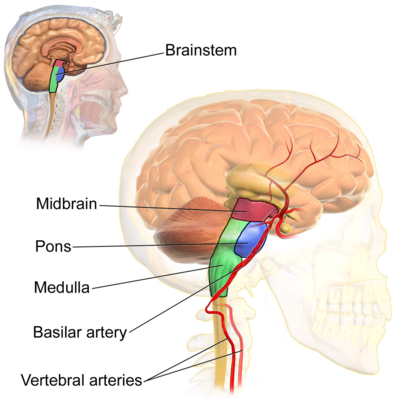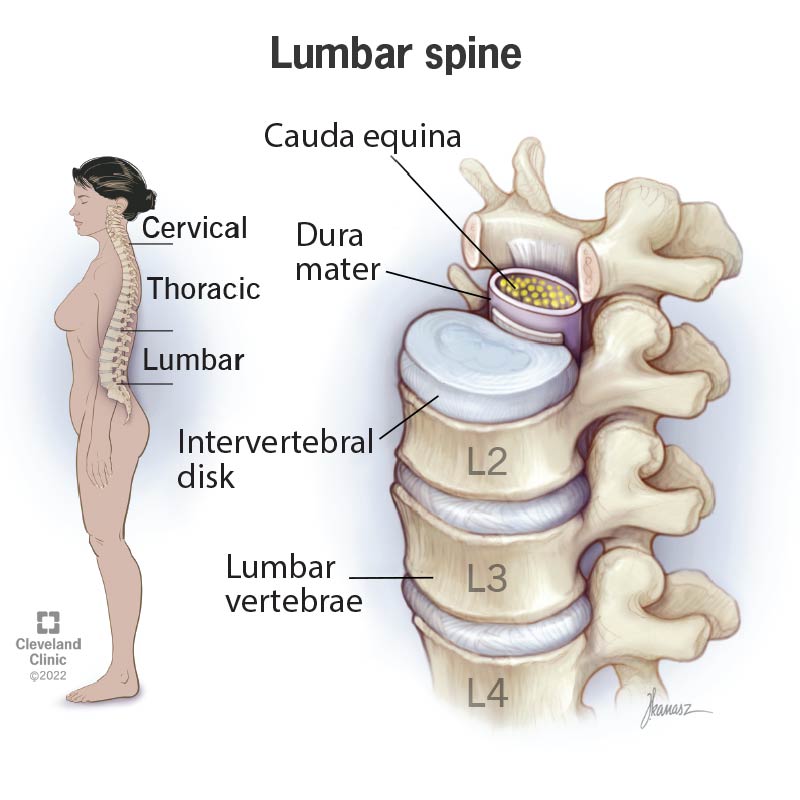The vertebral column is composed of 33 bones in total: 7 cervical (neck), 12 thoracic (chest), 5 lumbar (lower back), 5 sacral, and 4 coccygeal (fused into the coccyx). When viewed from the side, the spine has an S-shape. This is due to the inward curve of the cervical spine, and a gentle outward curve in the thoracic region.
The Vertebral Column | Bones of the Spine | Geeky Medics
The human vertebral column is composed of a set of natural curves, as is illustrated in Figure 8-1. These reciprocal curves are responsible for the normal resting, or neutral, posture of the spine. The cervical and lumbar regions display a natural lordosis, or slightly extended posture, in the sagittal plane.

Source Image: radiopaedia.org
Download Image
It is a flexible column that supports the head, neck, and body and allows for their movements. It also protects the spinal cord, which passes down the back through openings in the vertebrae. Figure 1. Vertebral Column. The adult vertebral column consists of 24 vertebrae, plus the sacrum and coccyx.

Source Image: my.clevelandclinic.org
Download Image
Lumbar Spine: What It Is, Anatomy & Disorders
Aug 8, 2023The vertebral column supports the body’s physical structure and nervous system, enabling movement and sensation. Pathology of the spine can lead to debilitating outcomes on quality of life. The vertebral column (spine) defines the animal subphylum Vertebra, or vertebrates, of the phylum Chordata. In humans, it is composed of 33 vertebrae that include 7 cervical, 12 thoracic, 5 lumbar, 5

Source Image: physio-pedia.com
Download Image
Label The Structures Of The Vertebral Column
Aug 8, 2023The vertebral column supports the body’s physical structure and nervous system, enabling movement and sensation. Pathology of the spine can lead to debilitating outcomes on quality of life. The vertebral column (spine) defines the animal subphylum Vertebra, or vertebrates, of the phylum Chordata. In humans, it is composed of 33 vertebrae that include 7 cervical, 12 thoracic, 5 lumbar, 5
The vertebral column, commonly known as the spine, spinal column, or backbone, is a flexible hollow structure through which the spinal cord runs. It comprises 33 small bones called vertebrae, which remain separated by cartilaginous intervertebral discs. The vertebral column forms the axial skeleton, skull bones, ribs, and sternum.
Brainstem – Physiopedia
Functions. The vertebral column is a rigid, bony structure that serves several important functions: Support: carrying the weight of the body above the vertebra and transmitting this through the pelvis to the legs; Movement: forms the central axis of the body by which the trunk and legs can move; Protection: contains the spinal canal, forming an osseous cylinder around the spinal cord
Sacrum | Radiology Reference Article | Radiopaedia.org

Source Image: radiopaedia.org
Download Image
Spinal anatomy | Radiology Reference Article | Radiopaedia.org
Functions. The vertebral column is a rigid, bony structure that serves several important functions: Support: carrying the weight of the body above the vertebra and transmitting this through the pelvis to the legs; Movement: forms the central axis of the body by which the trunk and legs can move; Protection: contains the spinal canal, forming an osseous cylinder around the spinal cord

Source Image: radiopaedia.org
Download Image
The Vertebral Column | Bones of the Spine | Geeky Medics
It is a flexible column that supports the head, neck, and body and allows for their movements. It also protects the spinal cord, which passes down the back through openings in the vertebrae. Figure 1. Vertebral Column. The adult vertebral column consists of 24 vertebrae, plus the sacrum and coccyx.

Source Image: geekymedics.com
Download Image
Lumbar Spine: What It Is, Anatomy & Disorders
The vertebral column is composed of 33 bones in total: 7 cervical (neck), 12 thoracic (chest), 5 lumbar (lower back), 5 sacral, and 4 coccygeal (fused into the coccyx). When viewed from the side, the spine has an S-shape. This is due to the inward curve of the cervical spine, and a gentle outward curve in the thoracic region.

Source Image: my.clevelandclinic.org
Download Image
Solved) – label the structures of the vertebral column. label the structures… (1 Answer) | Transtutors
May 10, 2022The vertebral column, also known as the spine, is composed of a series of bones called vertebrae, which are stacked one upon another and interconnected by cartilaginous intervertebral discs to form a column. It forms the skeleton of the neck and back and is divided into five regions based on structure and location of the vertebrae. The alignment of the vertebrae within the vertebral column

Source Image: transtutors.com
Download Image
Vertebral Column (Backbone) – Bony Features
Aug 8, 2023The vertebral column supports the body’s physical structure and nervous system, enabling movement and sensation. Pathology of the spine can lead to debilitating outcomes on quality of life. The vertebral column (spine) defines the animal subphylum Vertebra, or vertebrates, of the phylum Chordata. In humans, it is composed of 33 vertebrae that include 7 cervical, 12 thoracic, 5 lumbar, 5

Source Image: exploringnature.org
Download Image
Label the different regions of the vertebral column in Figure 6.3. Classify the kinds of ribs, and name the various subdivisions of the sternum as indicated by leader lines in Figure 6.4. |
The vertebral column, commonly known as the spine, spinal column, or backbone, is a flexible hollow structure through which the spinal cord runs. It comprises 33 small bones called vertebrae, which remain separated by cartilaginous intervertebral discs. The vertebral column forms the axial skeleton, skull bones, ribs, and sternum.

Source Image: homework.study.com
Download Image
Spinal anatomy | Radiology Reference Article | Radiopaedia.org
Label the different regions of the vertebral column in Figure 6.3. Classify the kinds of ribs, and name the various subdivisions of the sternum as indicated by leader lines in Figure 6.4. |
The human vertebral column is composed of a set of natural curves, as is illustrated in Figure 8-1. These reciprocal curves are responsible for the normal resting, or neutral, posture of the spine. The cervical and lumbar regions display a natural lordosis, or slightly extended posture, in the sagittal plane.
Lumbar Spine: What It Is, Anatomy & Disorders Vertebral Column (Backbone) – Bony Features
May 10, 2022The vertebral column, also known as the spine, is composed of a series of bones called vertebrae, which are stacked one upon another and interconnected by cartilaginous intervertebral discs to form a column. It forms the skeleton of the neck and back and is divided into five regions based on structure and location of the vertebrae. The alignment of the vertebrae within the vertebral column